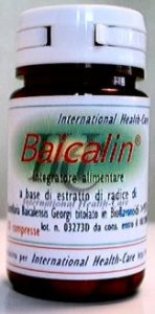-
Antiviral activity of plant flavonoid,
5,7,4'-trihydroxy-8-methoxyflavone, from the roots of Scutellaria
baicalensis against influenza A (H3N2) and B viruses.
Nagai T,
Suzuki Y,
Tomimori T,
Yamada H.
Oriental Medicine
Research Center, Kitasato Institute, Tokyo, Japan.
We investigated
effects of isoscutellarein-8-methylether
(5,7,4'-trihydroxy-8-methoxyflavone, F36) from the roots of
Scutellaria baicalensis
on the single-cycle
replication of mouse-adapted influenza viruses A/Guizhou/54/89 (H3N2
subtype) and B/Ibaraki/2/85 in Madin-Darby canine kidney (MDCK)
cells. The agent suppressed replication of these viruses from 6 to
12 h after incubation in a dose-dependent manner by 50% at 20 microM
and 90% at 40 microM, respectively. F36 (50 microM) reduced the
release of B/Ibaraki virus in the medium by 90-93% when it was added
to the MDCK cells at 0 to 4 h after incubation.
The cell-associated virus
determined by sialidase activity was also reduced by the treatment
at 0 to 4 h. F36 (120 microM) inhibited the low pH-dependent
membrane fusion of both the viruses with the liposome containing
mixed gangliosides from bovine brain.
However, the agent little
affected the hemagglutination and RNA-dependent RNA polymerase
activities of these viruses in vitro.
These results suggest that
F36 inhibits the replication of A/Guizhou and B/Ibaraki viruses at
least partly by inhibiting the fusion of viral envelopes with the
endosome/lysosome membrane which occurs at the early stage of the
virus infection cycle.
F36 (0.5 mg/kg) showed no antiviral activity against A/Guizhou and
B/Ibaraki viruses in mice when administered intranasally 5 min prior
to virus inoculation, whereas it significantly inhibited their
proliferation in the mouse lung when administered intranasally 7
times (total 3.5 mg/kg) from 18 h before to 54 h after virus
infection.
PMID: 7742801 [PubMed
- indexed for MEDLINE]
 |
|
